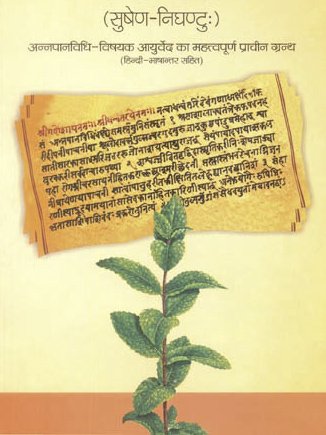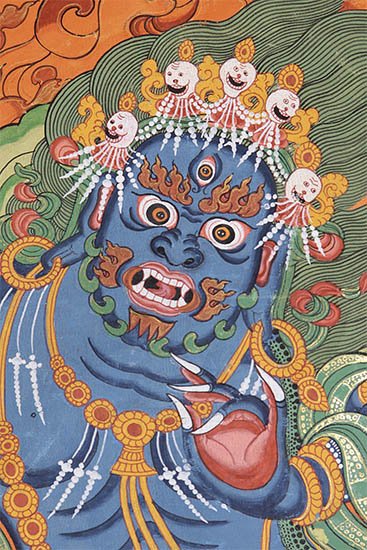Shankhapalaka, Śaṅkhapālaka, Shankha-palaka: 2 definitions
Introduction:
Shankhapalaka means something in Buddhism, Pali, Hinduism, Sanskrit. If you want to know the exact meaning, history, etymology or English translation of this term then check out the descriptions on this page. Add your comment or reference to a book if you want to contribute to this summary article.
The Sanskrit term Śaṅkhapālaka can be transliterated into English as Sankhapalaka or Shankhapalaka, using the IAST transliteration scheme (?).
In Hinduism
Ayurveda (science of life)
Source: Ancient Science of Life: Snake bite treatment in Prayoga samuccayamŚaṅkhapālaka (शङ्खपालक) refers to one of the eight primordial snakes, according to the 20th century Prayogasamuccaya (one of the most popular and widely practised book in toxicology in Malayalam).—The work classifies viṣa into two groups, viz. sthāvara and jaṅgama (animate and inanimate). This is followed by a brief description of the origin of snakes. A mythological story is narrated in this context. It is said that in the beginning, there were only 8 snakes, Ananta, Gulika, Vāsuki, Śaṅkhapālaka, Takṣaka, Mahāpadma, Padma and Karkoṭaka and that all other snakes originated from these.

Āyurveda (आयुर्वेद, ayurveda) is a branch of Indian science dealing with medicine, herbalism, taxology, anatomy, surgery, alchemy and related topics. Traditional practice of Āyurveda in ancient India dates back to at least the first millenium BC. Literature is commonly written in Sanskrit using various poetic metres.
In Buddhism
Tibetan Buddhism (Vajrayana or tantric Buddhism)
Source: MDPI Books: The Ocean of HeroesŚaṅkhapālaka (शङ्खपालक) is the name of a Nāga-lord associated with the guṇacakra or ‘merit circle’, according to the 10th-century Ḍākārṇava-tantra: one of the last Tibetan Tantric scriptures belonging to the Buddhist Saṃvara tradition consisting of 51 chapters.—Accordingly, [while describing the Merit Circle (guṇacakra)]: “[...] In addition, there are trees, the guardians of direction, serpent kings (nāgendra), and cloud kings in order—[...] [The Serpent kings are] (1) Vāsuki, (2) Takṣaka, (3) Karkoṭa, (4) Padma, (5) Mahāpadma, (6) Huluhulu, (7) Kulika, and (8) Śaṅkhapāla (śaṅkhapālaka). [...] All is here in the charnel grounds; he should give a wreath of vajras [to them] All is also to be done in this same [charnel ground]. [All is] taught to be both external and internal. The Merit Circle, the third, is thus [taught]”.

Tibetan Buddhism includes schools such as Nyingma, Kadampa, Kagyu and Gelug. Their primary canon of literature is divided in two broad categories: The Kangyur, which consists of Buddha’s words, and the Tengyur, which includes commentaries from various sources. Esotericism and tantra techniques (vajrayāna) are collected indepently.
See also (Relevant definitions)
Partial matches: Palaka, Shankha.
Query error!
Full-text: Shankhapala, Padma, Vasuki, Takshaka, Karkotaka, Gulika, Mahapadma, Ananta.
Relevant text
Search found 2 books and stories containing Shankhapalaka, Śaṅkhapālaka, Shankha-palaka, Sankhapalaka, Śaṅkha-pālaka, Sankha-palaka; (plurals include: Shankhapalakas, Śaṅkhapālakas, palakas, Sankhapalakas, pālakas). You can also click to the full overview containing English textual excerpts. Below are direct links for the most relevant articles:
Bhagavati-sutra (Viyaha-pannatti) (by K. C. Lalwani)
Snake bite treatment in Prayoga samuccayam < [Volume 35 (issue 4), Apr-Jun 2016]